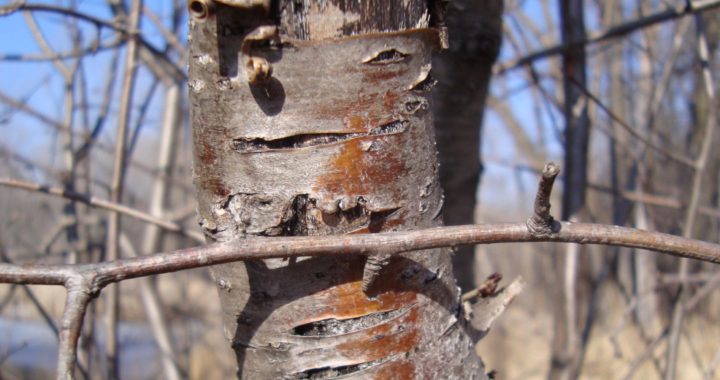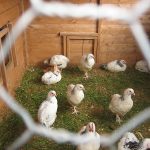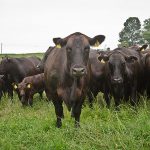Buckthorn is a concern for soybean farmers as it serves as an overwintering host for pests
HUTCHINSON, Minn. — Do you know if buckthorn is present in your woodlands? Buckthorn is one of Minnesota’s most damaging invasive plants. It can out compete native vegetation and degrade wildlife habitat. Buckthorn is also a concern for soybean farmers as it serves as the overwintering host plant for soybean aphid eggs and the crown rust fungus.
What is buckthorn? There are two species of buckthorn that are invasive species here in Minnesota, the common (Rhamnus cathartica) and the glossy (Fragula alnus). Both species are listed on the restricted noxious weeds list. Buckthorn is a tall shrub or small tree that can reach 25 feet tall. It is commonly found in the understory of woodlands, fence lines, and forest edges. The key identifiable feature of buckthorn is the “buck hoof print” that can be seen at the end of the twig. This hoof print is formed by two terminal buds and a thorn going down the middle. Buckthorn leaves are some of the first leaves to appear in the spring and the last to drop their leaves in the fall, a common trait among many woody invasive plants. Leaves are glossy, simple and oval and have serrated edges.
Management includes hand-pulling seedlings or small trees. A tool called a weed wrench can also assist with removing plants up to 2 ½-inches in diameter. For a dense understory of buckthorn, mowing or controlled burning are options. Monitor the area for regrowth and conduct follow up treatments as needed. Goats and other livestock grazing buckthorn has gained popularity in recent years. For larger trees with 2-inch or larger diameter trunk the plant should be cut down to the ground and the stump should be treated with chemical herbicide to prevent re-sprouting. Use a paintbrush, dauber or low volume sprayer to apply the herbicide containing triclopyr or glyphosate. Always follow label instructions for herbicides. Basal bark treatments or foliar applications of herbicide are also effective treatments for smaller buckthorn plants.
For more information and helpful videos about buckthorn identification or control visit the University of Minnesota Extension at https://blog-crop-news.extension.umn.edu/2020/07/controlling-buckthorn-who-what-where.html. Special thanks to Matt Russell, Extension forest resources specialist, Gary Wyatt and Claire LaCanne, Extension Educators for some of the details found in this article. Also check with your local Soil and Water Conservation District office for available tools or cost-share opportunities for managing buckthorn.
Last modified: 10/14/2020










